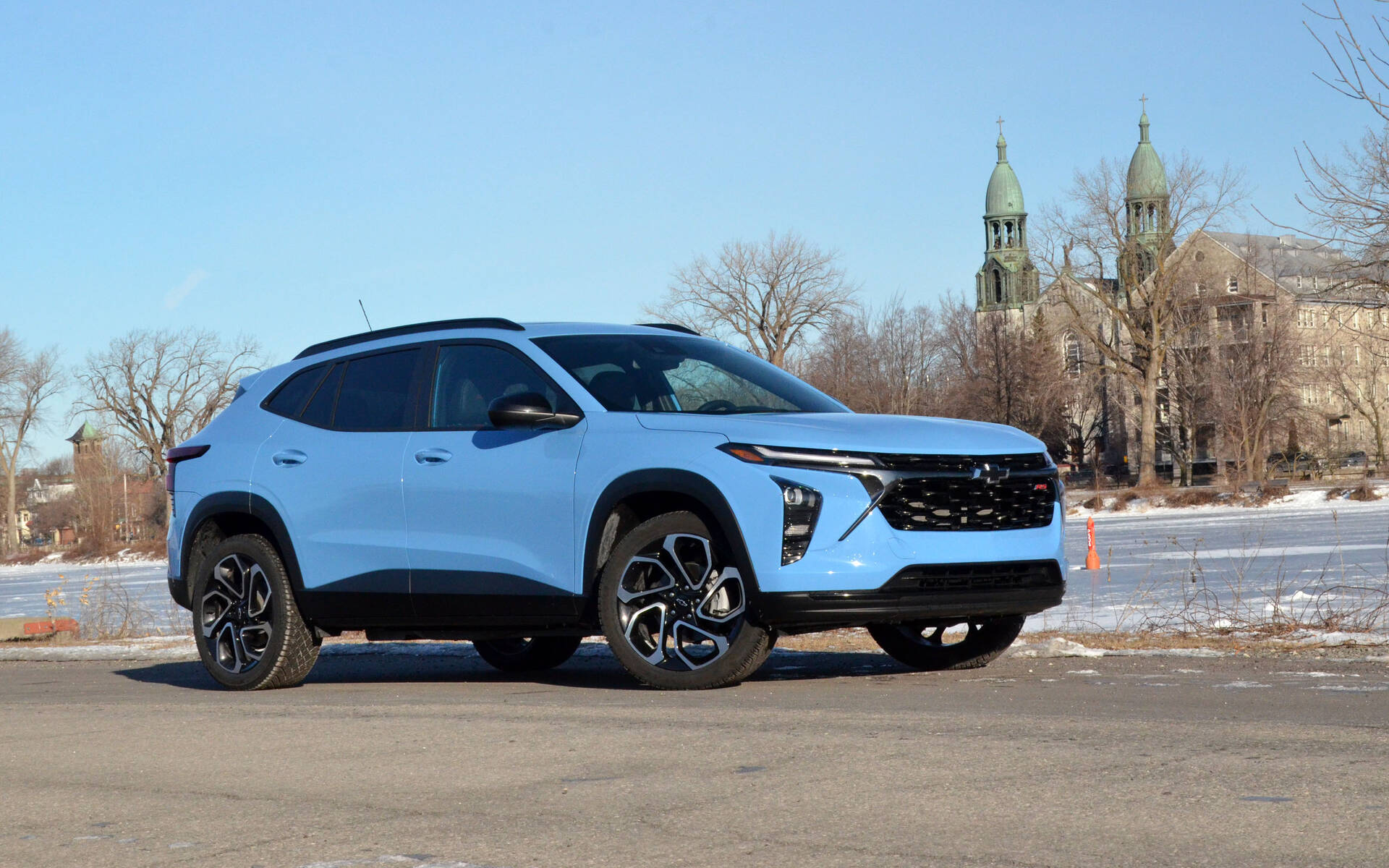2024 Chevrolet Trax: Well Played, GM

| Strong points |
|
|---|---|
| Weak points |
|
What do the Chevette, Sprint, Aveo and Spark have in common? All of them have, at one time or another in the past 40 years, served as the gateway to the Chevrolet lineup. And all of them, of course, were cars. Things are much different these days—small cars are out, and the brand’s entry-level vehicle is a crossover, the Trax, the second generation of which launched last year as a complete departure from its decade-old predecessor.
Let’s start with some bad news. Compared with a manual 2022 Spark LS, the new 2024 Trax LS is twice as expensive—$10,398 vs. $21,699, respectively. Freight and PDI charges are higher, too. Budget-minded customers suddenly need to, well, watch their budget.
- Also: 2024 Chevrolet Trax: Meet the Cruze 3.0
- Also: 2024 Chevrolet Trax is Completely Transformed, Goes FWD-Only
Then again, the Trax is twice as practical due to its larger dimensions. Heck, it can pack more stuff than its three direct competitors including the Hyundai Venue, Nissan Kicks and Kia Soul.

Leave the Buick Envista to the Old
Chevrolet and Buick are clearly different brands in terms of aspirations and fan bases, yet some of their models share a large number of components. The Trax is essentially the same vehicle as the new Buick Envista, except in a more chiseled body.
Both feature a turbocharged 1.2-litre triple-cylinder engine and a six-speed automatic transmission. Yeah, we know, six gears is just the minimum by today’s standards, but it’s still a heck of a lot better than the CVT mated to front-wheel-drive variants of the more expensive Chevrolet Trailblazer.
Output and torque are rated at 137 horsepower and 162 lb-ft, respectively, no matter if you go with Chevrolet or Buick. Based on the few days we spent behind the wheel of the Trax, however, it became clear that each brand has a different approach.

The Trax, on the other hand, boasts a stiffer ride than the Envista, especially in 2RS trim with 19-inch wheels. The result is sharper handling and a sportier, more playful vehicle overall. Ask any of my fellow auto writers and they’ll tell you the same thing. Chevy’s crossover also offers more responsive steering (those 19-inch alloys deserve some credit again), more feedback from the suspension, as well as a more agile footprint.
The only real frustration here comes from under the hood. While not unpleasant to the ear, the three-cylinder engine wastes no time complaining when you apply too much pressure on the throttle. In fact, as much as we hate to say it, the Trax almost begs to be driven as if equipped with a CVT. With gentle use of the go-pedal, gear shifts are smoother and engine revs can be kept at more reasonable levels. At 30-40 km/h, the autobox engages the third gear more often than not, minimizing revs and prioritizing fuel economy.

That’s an Entry-Level Cabin?
The top-line 2RS is unquestionably more appealing than every other Trax model, and its interior looks like it belongs to a car costing $10,000 more. The sleek dual displays, flat-bottom and leather-wrapped steering wheel, Evotex leatherette upholstery and wireless smartphone charging tray are just some of the highlights. Red stitching also adds spice to an otherwise dark cabin.
True, the infotainment system in the Trax pales in comparison with the much larger Chevrolet Suburban, but other than that, life inside the small crossover is not as bad as we anticipated.

Of course, we must warn you that hard plastics are everywhere, the seats are not super comfortable (particularly in the rear), and visibility out the rear window is limited. What’s more, noise insulation is lacking, there’s no hidden storage compartment under the cargo floor, and vibrations from the three-cylinder engine can easily be felt by occupants.
As far as fuel consumption goes, the point of having just three cylinders is to improve efficiency. At least in theory. On our watch, the Trax managed no better than a combined 8.5 L/100 km even though we never got too carried away (officially, Natural Resources Canada rates it at 7.9 L/100 km). That’s disappointing.

Our Verdict
Small cars as we know them are virtually extinct—there’s no going back at this point. The little Chevys we mentioned at the top? They feel like a distant memory now. Crossovers like the 2024 Chevrolet Trax have taken over. But you know what? While the exterior package is different, the interior is basically on par with your average hatchback. To wit, the Trax has a trunk capacity of 725 litres.
The flat floor in the second row (there’s no driveshaft) creates more legroom, which is something we appreciated. And in terms of driving, the Trax handles much more like a car than an SUV, that’s for sure.
Ultimately, the biggest thing going for the 2024 Chevrolet Trax is cheap pricing. How refreshing to see a car, er, crossover under $30,000 in a market where the average transaction price for a brand new vehicle last year topped $66,000. Even the Trax 2RS, with a base MSRP of $28,199, looks like a steal. Well played, GM.











